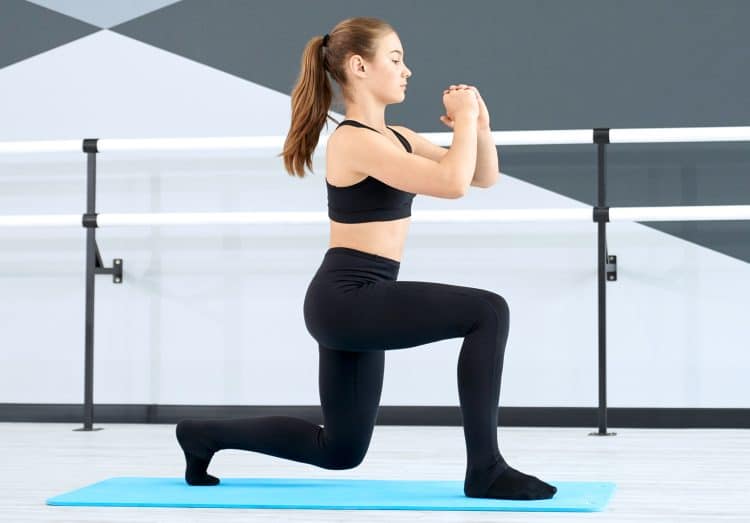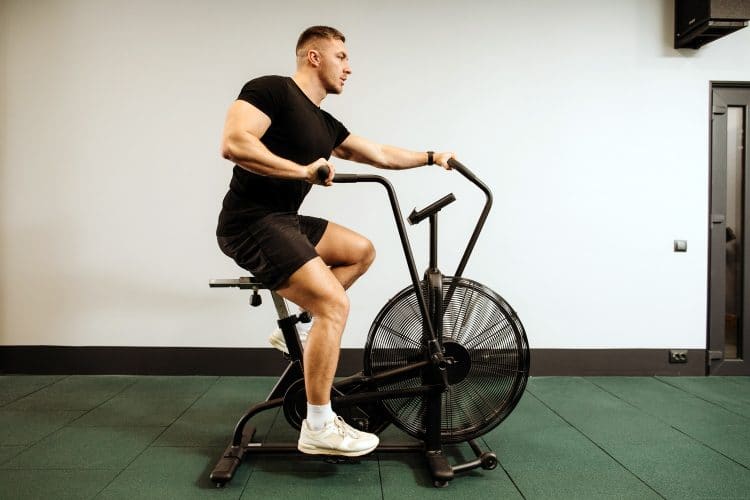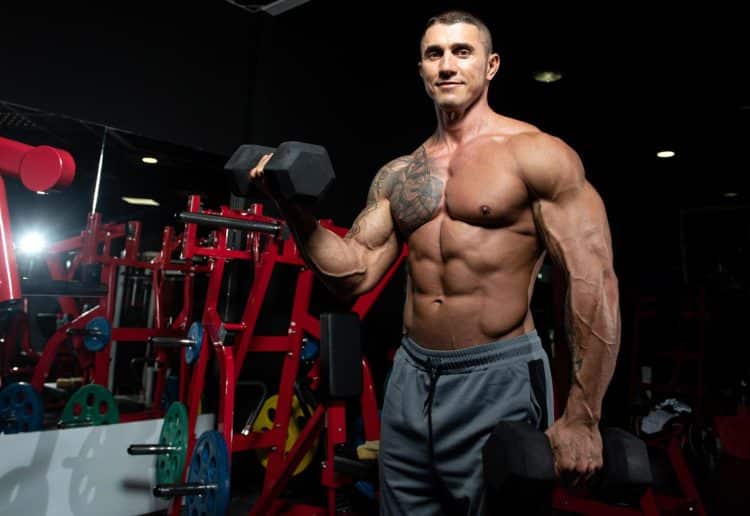If you look at the workouts of professional bodybuilders and strength athletes, you’ll often see that many of them train six or more times per week. As well as training very frequently, sometimes twice a day, those lifters also do high-volume, long-duration workouts.
This adds up to a whole lot of training!
However, for the average gym-Joe or Joanne, such long and frequent workouts are impractical, if not impossible.
Professional athletes are paid to train, while amateurs must fit their workouts around career and family commitments. Plus, your diet may not be perfect, a full night of sleep may be a rarity, and you probably aren’t floating on a sea of performance-enhancing drugs, either! All of these things make high-volume, high-frequency workouts unworkable.
Because of this, most exercisers have to get by on fewer workouts and are often limited to an hour or so per training session.
But, when time is really short, and your energy levels are low, even 3-4 workouts per week may be unfeasible.
Level Up Your Fitness: Join our 💪 strong community in Fitness Volt Newsletter. Get daily inspiration, expert-backed workouts, nutrition tips, the latest in strength sports, and the support you need to reach your goals. Subscribe for free!
The good news is that you can build muscle and get stronger with just two workouts per week. While this is not ideal, it’s many times better than not training at all.
In this article, we discuss the ins and outs of 2-day split workouts and provide you with some examples to try.
What is A 2-Day Split Workout?
A 2-day split is a training program involving two workouts per week. Muscle groups are divided across two training sessions, and split options include upper body/lower body, anterior/posterior, or push/pull.
Training two days per week leaves a lot of time for rest and recovery, and you only have to commit to two workouts. This is a good approach for anyone that’s too busy to train more often or needs a lot of recovery time.
Two-day splits are also useful for athletes who need additional time to train for their sport, e.g., soccer and basketball players and runners.
On the downside, low-frequency training programs often require slightly longer workouts to ensure each one contains sufficient volume for muscle growth. However, even so, workout duration should be manageable for most people.
Rules for Designing a 2-Day Workout Split
Do you want to create your own two-day workout split? These are the rules you need to follow to write a balanced and effective gym program!
1. Use mainly compound exercises
Exercises can be classified into one of two groups: Isolation or compound. Isolation exercises involve movement at one joint and usually train a very small number of muscles, e.g., pec deck and calf raise.
In contrast, compound exercises involve multiple muscle groups and joints working together, which makes them more time efficient and often better for building strength and muscle mass. Examples include bench presses, squats, and pull-ups.
With only two workouts per week, you need to cram a lot of training into a relatively short time, so compound exercises are best. You CAN include a couple of isolation exercises in your workouts, but 80-90% of your program should be compound exercises.
2. Balance your muscle groups
Muscles are arranged across joints in opposing pairs, e.g., quadriceps and hamstrings, biceps and triceps, deltoids and lats, and pecs and mid-traps and rhomboids. For optimal function and aesthetics, you should try to balance these opposing muscle groups by doing a similar number of sets for each one.
So, if you do six sets for your quads, your workout should perform six sets for your hamstrings, too.
Balancing your workouts in this way will prevent future strength and muscle-size imbalances.
3. Avoid doing too many exercises for the same muscle group
When you’ve got time to dedicate an entire training session to 1-2 muscle groups, you can do a lot of different exercises and hit those muscles from a variety of angles. But, with only two workouts per week, you cannot perform so many exercises, or your training sessions will become prohibitively long.
So, you’ll need to narrow your program down to 1-2 exercises per muscle group. Choose the movements that provide the biggest bang for your buck. Good choices include squats, deadlifts, leg presses, lunges, bench presses, pull-ups, bent-over rows, and shoulder presses.
4. Limit yourself to between 20-30 sets per workout
A program that looks quite manageable on paper can be long and arduous in real life. It’s all too easy to prescribe too many sets, so your workout ends up taking two hours or more. Once you have written your program, count up how many sets it contains and make sure it’s no more than 30. You should be able to complete 30 sets in 90 minutes, which is really the upper limit of time you should spend in the gym.
In fact, doing closer to 20 sets per session will probably mean you can train harder, and your workout will be more productive. When it comes to training volume, more is not always better. As the saying goes, you can train hard, or you can train long, but you can’t do both!
5. Respect your body’s need for rest and recovery
Even two workouts per week will take a lot out of your body. Your muscles only grow when you are resting and providing they receive the nutrients they need. So, if you want your workouts to be productive, you need to eat well and get plenty of sleep.
Also, it’s important to space your workouts out, so you get plenty of rest between each one. For example, it’d probably be a mistake to try and cram all your training into two consecutive days, i.e., Friday and Saturday. Instead, it’s best to separate your workouts by several days to allow plenty of time for recovery, i.e., Monday and Thursday.
If that is not possible, make sure you avoid doing similar workouts on consecutive days. Instead, do something like an upper body/lower body two-day split, where different body parts are trained each day.
2-Day Split Workout Examples
There are several ways to organize a two-day workout split. Each one can work and be modified to suit your needs and goals. Here are five different 2-day split workouts to try, complete with example exercises, sets, and reps.
1. Upper body/lower body 2-day split
The upper body/lower body split is arguably the easiest way to divide your body across two workouts. Simply train your chest, back, shoulders, and arms on one day and your legs the next.
On the plus side, this is a very straightforward split that almost writes itself. But, on the downside, the upper body workout will probably be considerably longer than the lower body workout.
Example upper body workout
| # | Exercise | Sets | Reps | Recovery |
| 1 | Dumbbell bench press | 3 | 6-8 | 2 minutes |
| 2 | Cable crossover | 2 | 10-12 | 90 seconds |
| 3 | Pull-ups/chin-up | 3 | 6-8 | 2 minutes |
| 4 | Seated cable row | 2 | 10-12 | 90 seconds |
| 5 | Dumbbell Arnold press | 3 | 6-8 | 2 minutes |
| 6 | Cable lateral raise | 2 | 10-12 | 90 seconds |
| 7 | EZ barbell biceps curl | 2 | 8-10 | 90 seconds |
| 8 | EZ bar skull crusher | 2 | 8-10 | 90 seconds |
| 9 | Dumbbell concentration curl | 2 | 10-12 | 60 seconds |
| 10 | Cable triceps pushdown | 2 | 10-12 | 60 seconds |
Example lower body workout
| # | Exercise | Sets | Reps | Recovery |
| 1 | Squat | 3 | 6-8 | 2 minutes |
| 2 | Leg press | 3 | 8-10 | 90 seconds |
| 3 | Leg extension | 3 | 10-12 | 60 seconds |
| 4 | Leg curl | 3 | 10-12 | 60 seconds |
| 5 | Lunge | 3 | 12-15 per leg | 60 seconds |
| 6 | Seated calf raise | 3 | 12-15 | 60 seconds |
| 7 | Standing calf raise | 3 | 12-15 | 60 seconds |
2. Push/pull 2-day split
From an anatomical perspective, all muscles pull and do not push. Instead, muscles shorten to generate force and actually pull your limbs straight! That said, exercises can be divided into flexion (pulling) and extension (pushing) movements, e.g., leg extension (push) and leg curls (pull).
Level Up Your Fitness: Join our 💪 strong community in Fitness Volt Newsletter. Get daily inspiration, expert-backed workouts, nutrition tips, the latest in strength sports, and the support you need to reach your goals. Subscribe for free!
This split involves two full-body workouts – one using your pushing muscles and the other using your pulling muscles. This approach ensures that all major muscles are trained equally.
Example push workout
| # | Exercise | Sets | Reps | Recovery |
| 1 | Leg press | 3 | 8-15 | 60-90 seconds |
| 2 | Leg extension | 3 | 8-15 | 60-90 seconds |
| 3 | Standing calf raise | 3 | 8-15 | 60-90 seconds |
| 4 | Chest press machine | 3 | 8-15 | 60-90 seconds |
| 5 | Shoulder press machine | 3 | 8-15 | 60-90 seconds |
| 6 | Triceps dip | 3 | 8-15 | 60-90 seconds |
| 7 | Barbell wrist extension | 3 | 8-15 | 60-90 seconds |
| 8 | 45-degree back extension | 3 | 8-15 | 60-90 seconds |
Example pull workout
| # | Exercise | Sets | Reps | Recovery |
| 1 | Deadlift | 3 | 8-15 | 60-90 seconds |
| 2 | Leg curl | 3 | 8-15 | 60-90 seconds |
| 3 | Lat pulldown | 3 | 8-15 | 60-90 seconds |
| 4 | Single-arm dumbbell row | 3 | 8-15 | 60-90 seconds |
| 5 | Face pulls | 3 | 8-15 | 60-90 seconds |
| 6 | Barbell biceps curl | 3 | 8-15 | 60-90 seconds |
| 7 | Barbell wrist curl | 3 | 8-15 | 60-90 seconds |
| 8 | Cable abs crunch | 3 | 8-15 | 60-90 seconds |
3. Powerlifting 2-day split
Most powerlifters train four or more times per week, but this is not always the case. By focusing on the “big three” lifts and keeping assistance training to a minimum, it’s possible to train for powerlifting with just two workouts per week.
This is an ideal workout plan for athletes who want to get strong but still leaves plenty of time and energy for sports-specific training.
Example squat and bench press workout
| # | Exercise | Sets | Reps | Recovery |
| 1 | Squat | 5 | 3-5 | 3 minutes |
| 2 | Romanian deadlift | 3 | 6-8 | 2 minutes |
| 3 | Bench press | 5 | 3-5 | 3 minutes |
| 4 | Close grip bench press | 3 | 6-8 | 2 minutes |
| 5 | Chest-supported row | 3 | 6-8 | 2 minutes |
Example deadlift and bench press workout
| # | Exercise | Sets | Reps | Recovery |
| 1 | Deadlift | 5 | 3-5 | 3 minutes |
| 2 | Leg press | 3 | 6-8 | 2 minutes |
| 3 | Paused bench press | 5 | 3-5 | 3 minutes |
| 4 | Wide grip bench press | 3 | 6-8 | 2 minutes |
| 5 | Pendlay row | 3 | 6-8 | 2 minutes |
4. Agonist and synergist 2-day split
With this split, you train all your “big” muscle groups one day and your smaller muscle groups the next. This is a good approach for anyone who wants to dedicate more time to things like biceps, triceps, or calves, which are often left under-trained when time is short.
Example agonist workout
| # | Exercise | Sets | Reps | Recovery |
| 1 | Front squat | 4 | 8-12 | 60-90 seconds |
| 2 | Good morning | 4 | 8-12 | 60-90 seconds |
| 3 | Bench press | 3 | 8-12 | 60-90 seconds |
| 4 | Incline dumbbell fly | 3 | 8-12 | 60-90 seconds |
| 5 | Bent-over row | 3 | 8-12 | 60-90 seconds |
| 6 | Lat pulldown | 3 | 8-12 | 60-90 seconds |
| 7 | Barbell shoulder press | 3 | 8-12 | 60-90 seconds |
| 8 | Barbell upright row | 3 | 8-12 | 60-90 seconds |
Example synergist workout
| # | Exercise | Sets | Reps | Recovery |
| 1 | Preacher curl | 3 | 8-12 | 60-90 seconds |
| 2 | Dumbbell curl | 3 | 8-12 | 60-90 seconds |
| 3 | Dumbbell skull crusher | 3 | 8-12 | 60-90 seconds |
| 4 | Cable rope pushdown | 3 | 8-12 | 60-90 seconds |
| 5 | Seated calf raise | 3 | 8-12 | 60-90 seconds |
| 6 | Standing calf raise | 3 | 8-12 | 60-90 seconds |
| 7 | Weighted plank | 3 | 8-12 | 60-90 seconds |
| 8 | Cable side bend | 3 | 8-12 | 60-90 seconds |
5. Full-body 2-day split
If you only have two days to train, you may get better results from two full-body workouts per week. However, to avoid boredom and overuse injuries, it’s probably best to do two different workouts.
So, while this isn’t strictly a split workout, it’s a great option if you only have two days a week for training.
Example full-body workout 1
| # | Exercise | Sets | Reps | Recovery |
| 1 | Squat | 4 | 8-10 | 90 seconds |
| 2 | Leg curl | 4 | 8-10 | 90 seconds |
| 3 | Bench press | 4 | 8-10 | 90 seconds |
| 4 | Bent over row | 4 | 8-10 | 90 seconds |
| 5 | Dumbbell overhead press | 4 | 8-10 | 90 seconds |
| 6 | Biceps cable curl | 4 | 8-10 | 90 seconds |
| 7 | Weighted crunch | 4 | 8-10 | 90 seconds |
Example full-body workout 2
| # | Exercise | Sets | Reps | Recovery |
| 1 | Deadlift | 4 | 8-10 | 90 seconds |
| 2 | Leg extension | 4 | 8-10 | 90 seconds |
| 3 | Incline dumbbell bench press | 4 | 8-10 | 90 seconds |
| 4 | Pull-up/chin-up | 4 | 8-10 | 90 seconds |
| 5 | Barbell overhead press | 4 | 8-10 | 90 seconds |
| 6 | EZ bar skull crusher | 4 | 8-10 | 90 seconds |
| 7 | 1-arm farmer’s walk | 4 | 15-20 yds | 90 seconds |
How to Warm Up for a 2-Day Split Workout
Warming up is an integral part of working out. Your warm-up prepares your muscles, joints, and nervous system for what you are about to do. This should help lower your risk of injury, minimize delayed onset muscle soreness, and make your workout more productive.
But how should you warm up before training? In general, you need to perform the following:
- A pulse raiser – this is the part of the warm-up that makes you warm. It usually consists of 5-10 minutes of easy cardio, preferably using an exercise that involves your legs and arms, e.g., a rower or an air bike.
- Mobility exercises – these movements ensure your joints are lubricated and ready to go and include things like shoulder rolls, wrist rolls, and elbow flexion/extension. You may also want to mobilize your spine.
- Dynamic flexibility exercises – unlike static stretches, dynamic stretches involve large, smooth movements to increase flexibility and tissue elasticity.
Read more about warming up for strength training here.
2-Day Split Workout FAQs
Do you have a question about 2-day split workouts? Don’t worry – we’ve got the answers!
1. Is training twice a day enough to build muscle and strength?
Training twice a week is not optimal, but it should still produce noticeable increases in muscle size and strength. Current bodybuilding knowledge suggests that muscles need 10-20 hard sets of training per week and do best with 2-3 workouts. Neither of these things is really possible with just two weekly workouts.
However, suppose you only have time for two workouts per week. In that case, there is no point worrying about what is optimal, and you have to make do with what is possible and practical. Two workouts per week are infinitely better than none, and you should still see good progress from your 2-day workout split.
Read more about the hierarchy of effect strength training program design here.
2. Are 2-day split workouts best for bulking or cutting?
In theory, you can cut or bulk using a 2-day split. That’s because cutting and bulking are more a matter of diet than they are training.
For example, combine a 2-day workout split with a calorie surplus, and you should gain weight and build muscle. In contrast, do the same workout while in a calorie deficit, and you should burn fat and lose weight.
That said, training twice a week probably won’t have much of an impact on your weekly caloric expenditure, so fat and weight loss will be slow. You should work out more often if you want to lose weight faster.
Of course, just because you only lift weights twice a week doesn’t mean you can’t include some cardio in your weekly training schedule.
Read more about bulking vs. cutting here.
3. Can I change the exercises in the workouts provided above?
You certainly can! The exercises are only examples, and you are free to slot in your favorites and create your own unique training plans. However, remember to adhere to the programming rules outlined elsewhere in this article so that your newly-designed workout is as effective as possible.
4. Can I train more often with a 2-way split?
Just because a 2-way split divides your muscles into two doesn’t mean you are stuck with training twice a week. You can train three or four times a week without changing your program.
So, if you want to train three times a week, simply follow this configuration:
- Monday – workout 1
- Wednesday – workout 2
- Friday – workout 1
Then, the next week, switch things around and do the following:
- Monday – workout 2
- Wednesday – workout 1
- Friday – workout 2
Alternatively, if you want to train four times a week, just do this:
- Monday – workout 1
- Tuesdays – workout 2
- Thursday – workout 1
- Friday – workout 2
5. Can I use any supplements to make these workouts more effective?
While you don’t have to use supplements to build muscle and get stronger, there are some products that may be useful. For example, supplements can help you train harder and longer, recover better between workouts, or improve your general health to enhance the muscle-building process.
Good options include:
- Creatine – for energy and muscle building
- Pre-workouts – for fast-acting energy and better workouts
- Protein powder – for recovery and muscle growth
- BCAAs and EAAs – for recovery and muscle growth
- ZMA – for better sleep and hormone optimization
However, it’s important to remember that even the best supplements won’t help if you aren’t training hard, eating right, and getting plenty of sleep.
More Split Workout:
Closing Thoughts
Two workouts per week are not ideal for most people. The volume and frequency are too low to produce optimal results, i.e., rapid increases in muscle size or strength. However, if your time and energy are limited, and you can only dedicate two days a week to lifting, a 2-day split workout is better than not training at all.
Ultimately, providing you work hard, eat well, and get plenty of sleep, even two workouts per week will build strength and muscle size. However, if you want the best possible results, you probably need to train 3-4 times a week.
That said, two workouts per week will always be preferable than one or none!












